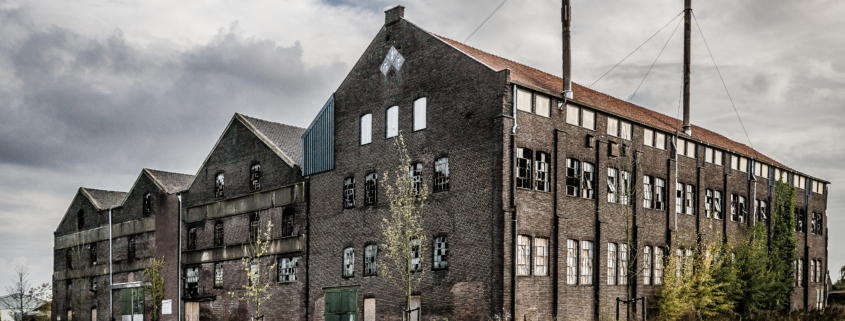The UK’s housing crisis shows no signs of easing, with demand for affordable, high-quality homes continuing to outstrip supply. At the same time, planners and policymakers are under increasing pressure to protect greenbelt land, promote sustainable development, and rejuvenate urban spaces. In this complex landscape, brownfield sites — previously developed land that is no longer in use — offer a valuable, often underutilised opportunity. But unlocking their potential requires innovation, speed, and flexibility. That’s where offsite construction can make a significant difference. MMC Editor Joe Bradbury investigates:
Offsite and modern methods of construction (MMC) have long been lauded for their speed, efficiency and quality. Yet their role in tackling brownfield challenges is only just beginning to receive the attention it deserves. When deployed thoughtfully, factory-built solutions can overcome many of the planning, logistical and environmental hurdles associated with redeveloping previously used land — helping to create vibrant, sustainable communities without encroaching on the countryside.
Why brownfield matters
The government estimates that there are over 23,000 brownfield sites across the UK, with the capacity to deliver more than one million new homes. These sites often lie in urban areas with existing infrastructure, transport links, and community services — making them highly desirable locations for new development.
However, brownfield projects come with inherent complications. Issues such as site contamination, restricted access, irregular layouts, and the need to preserve or work around existing buildings can deter traditional developers. Site preparation costs can be high, timelines uncertain, and disruption to neighbours significant.
In this context, offsite construction presents a compelling alternative.
Precision, speed and reduced disruption
Offsite methods involve manufacturing building components — or entire modules — in a controlled factory environment, which are then transported to site for assembly. This significantly reduces time spent on-site, limiting disruption to local residents and minimising the impact on surrounding infrastructure.
For brownfield projects in densely populated areas, this is a major advantage. Reduced vehicle movements, shorter construction windows, and lower noise and dust levels help developments progress smoothly, maintaining good relationships with local communities and planning authorities.
In addition, the precise, repeatable nature of offsite construction ensures that even challenging sites can be tackled with confidence. Tight footprints, unusual shapes, and complex layouts can be accommodated through flexible, digitally modelled design processes, often enabling development that would be unfeasible or cost-prohibitive using traditional techniques.
De-risking development with digital tools
One of the major barriers to brownfield development is uncertainty. Site conditions can be unpredictable, and remediation works are often more complex than anticipated. By integrating digital tools such as Building Information Modelling (BIM) and 3D site scanning early in the process, offsite developers can gain a clearer understanding of the site and optimise the design accordingly.
This front-loaded design approach helps reduce errors, manage costs and de-risk the project — something particularly valuable for housing associations and local authorities working to tight budgets and delivery deadlines.
The integration of digital twin technology also allows developers to simulate energy performance, daylighting, and spatial layouts before construction begins, ensuring the final product is not only technically viable but also environmentally and socially responsive.
Creating quality homes on complicated plots
Contrary to outdated perceptions of prefab as low quality or ‘cookie-cutter’ in appearance, modern offsite construction allows for remarkable architectural flexibility. High-specification finishes, a wide choice of materials, and customisable facades mean developments can be tailored to reflect local character and planning requirements.
For brownfield sites, which may be located in conservation areas or next to heritage buildings, this design adaptability is key. Developers can create attractive, modern homes that complement their surroundings while still benefiting from the efficiency and cost control of factory-based construction.
More importantly, offsite construction tends to deliver superior build quality. With tighter tolerances and greater control over materials and workmanship, homes are built to higher environmental and performance standards, reducing heating bills and improving comfort for residents.
A partner to regeneration
Brownfield development is not just about building houses — it’s about revitalising neighbourhoods. Empty plots and derelict buildings can attract antisocial behaviour, lower surrounding property values, and blight communities. By transforming these sites into places people want to live, we can trigger wider regeneration.
Offsite construction, with its ability to deliver homes faster and more predictably, can accelerate this regeneration process. Schemes that might otherwise take years to complete can be delivered in a fraction of the time, offering immediate improvements to the urban fabric and attracting further investment.
Moreover, the use of local labour in final assembly and site preparation, combined with skills development in offsite manufacturing, brings economic benefits to communities beyond just housing provision.
Looking ahead
The levelling-up agenda and national planning policy both highlight the importance of building on brownfield first. But to turn ambition into action, we must adopt the right tools. Offsite construction offers a unique opportunity to tackle brownfield challenges head-on — with speed, flexibility, and environmental performance built in from day one.
By marrying digital innovation with precision manufacturing, we can unlock the full potential of the UK’s brownfield land, creating the homes and communities of tomorrow without sacrificing the green spaces we all depend on.
Now is the time to think differently about how we build — and where.





Leave a Reply
Want to join the discussion?Feel free to contribute!